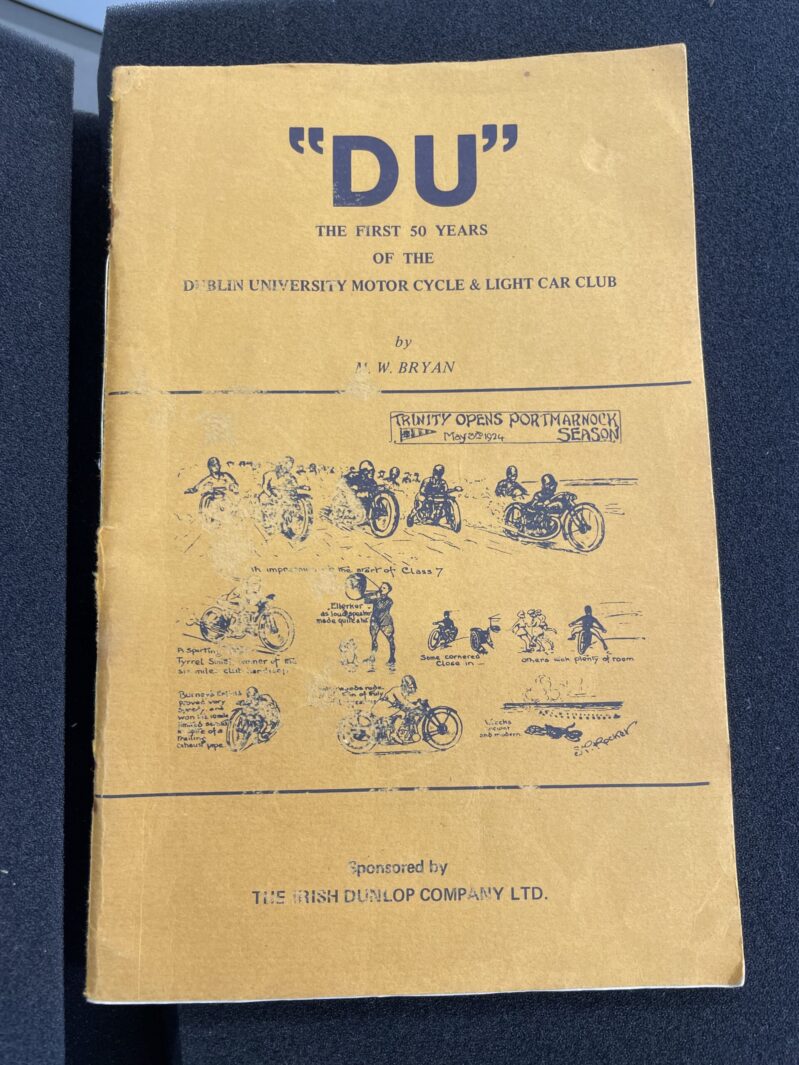
Spring of 2019 in the Ussher library. I’m trying to work through a list of Contract and Tort Law cases when I, an avid motorsports enthusiast, stumble across the 1974 case of McComiskey vs. McDermott. The case regarded a rally held in Kilmacanogue where the car involved crashed and the timekeeper attempted to sue the driver for negligent driving. One sentence immediately seized my attention: the rally, on the night of October 25th, 1968, was sanctioned by “the Dublin University Motor Club”.
Trinity had a motor club? Surely not – I would have heard about it. I Googled the name and the first result was a 1953 publication from the Irish Jaguar Club, mentioning “the late Henry Smith, of the Dublin University Motor Club”. The second was a 2011 article detailing the provenance of a series of cars, mentioning a Ron Peffers as having been part of the DU Motor Club. A pair of hill climb races in the mid-20th century, a rally three decades later and a few oblique references in between were all I could find of this intriguing Trinity puzzle.
Both students involved in the court cases attended UCD, which led me to doubt that this was even a Trinity club. Plus, one reference to the club I found online had also abbreviated the name of the club to “the DUMC & LCC”. This raised more questions than answers.
While appealing to the Central Societies Committee (CSC) yielded no results, the Central Athletic Club (DUCAC) referred me to a man who ended up being crucial to my research: Cyril Smith. In an email, Smith revealed that the club was actually called “the Dublin University Motor Cycle and Light Car Club” and that it had been founded in 1924 by Professor John Joly. With the club’s real name, I began my search anew. An Irish Times article revealed that the club closed in 2003. Smith was of the belief that at some point in the 1970s or 1980s, it had been discharged by DUCAC due to excessive costs and liabilities and had existed until 2003 as a social club for students interested in motorsports.
Though Smith’s knowledge ended there, it transpired that the aforementioned Maurice Bryan held the missing information. He was, at one point, the club’s treasurer who had written an authoritative history of the club that, according to Smith, had been lost to the annals of time. I ended up coming across a copy in the Early Printed Books section – DU: The First 50 Years of the Dublin University Motorcycle and Light Car Club.
In the first four decades of the club, its fortunes seemed to fluctuate. The 1920s saw “too many events chasing too few competitors”, but the club’s fortunes rebounded in the 1930s, with improving economic conditions and the commitment of dedicated enthusiasts like Evan Griffith. Though petrol rationing during the Second World War limited events and membership, both rose again in the 1950s.
The 1960s saw the continuation of the club’s biggest hill climb race along Mount Venus, but the outbreak of foot-and-mouth disease put a halt to all sport. Bryan recalls that the ban remained in place until February, leaving motorsport enthusiasts at a loose end. “Houses were painted, and a whole host of unfamiliar activities pursued”, he says.
The last documented era of the club was ushered in by the opening of a brand new track at Montello Park, which remains the Republic’s only international racing circuit. Bryan’s record ended in 1973, at a time when membership was inconsistent but good and the club was prospering. “The turnover on one event could now exceed £700, a far cry from the days of annual turnover of a tenth of this figure”. One can only wonder what happened in the 40 years following Bryan’s last report and the club’s eventual closure and disappearance.






